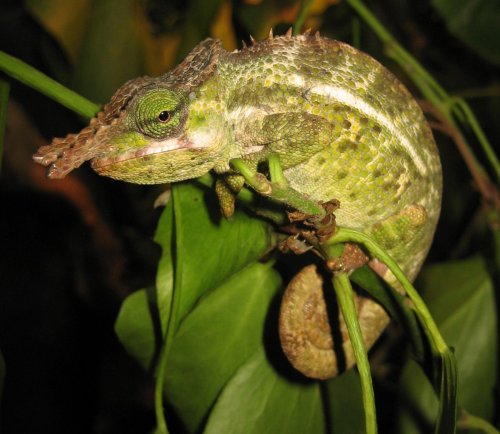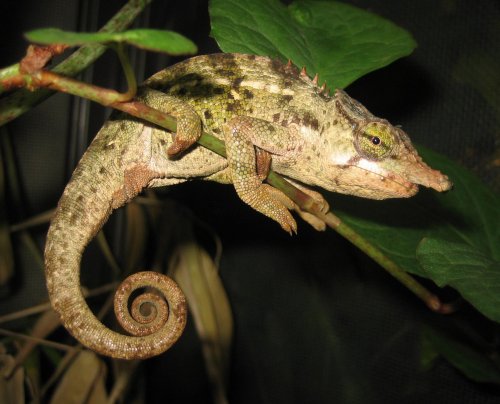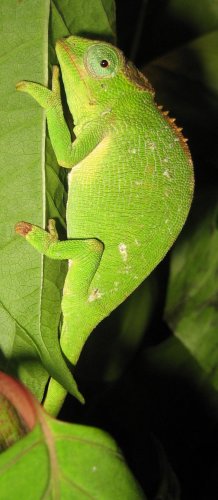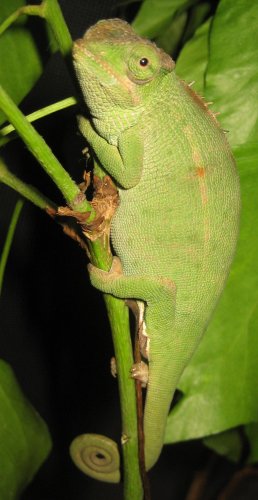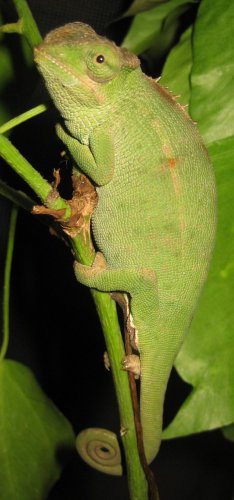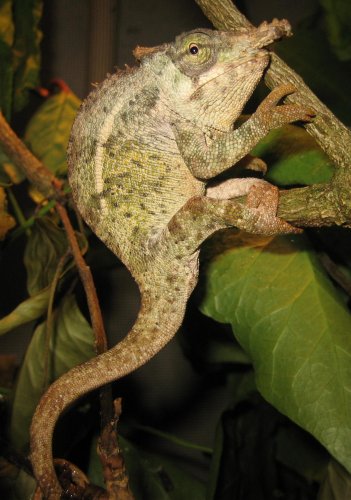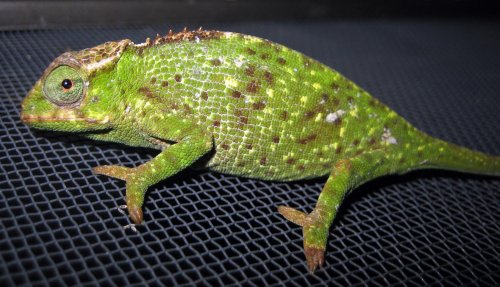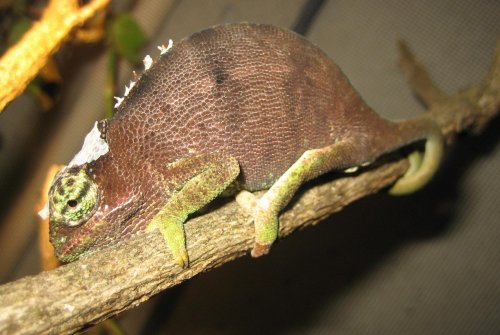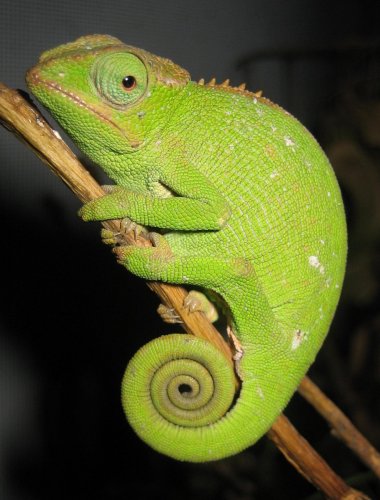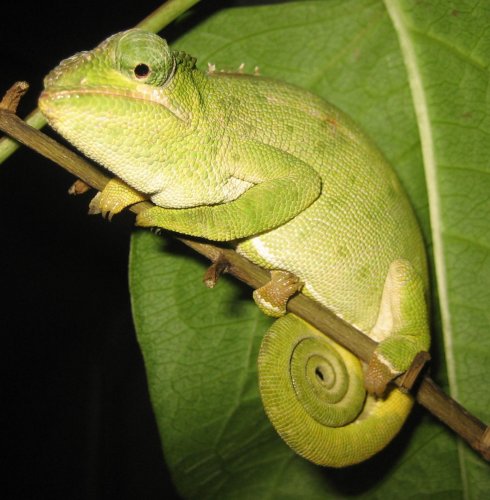Mike Fisher
Established Member
Finally some good photos of the rarely seen or photographed Kinyongia uluguruensis. These are very likely the first good photos of healthy individuals ever taken of this species. The photos show two different males, the first one with diverging rostral blades and the smallest female is the third photo. I've only had them a week and their weight and coloration is getting much better.
They are one of the smaller species of Kinyongia.
Their temperament is very good. They are active like Kinyongia is known for, but not feisty like Kinyongia multituberculata can be. I've not seen one hiss or try to bite, but they will try to leap if you are not careful. The smaller ones will drop from a branch when startled.
They are one of the smaller species of Kinyongia.
Their temperament is very good. They are active like Kinyongia is known for, but not feisty like Kinyongia multituberculata can be. I've not seen one hiss or try to bite, but they will try to leap if you are not careful. The smaller ones will drop from a branch when startled.




